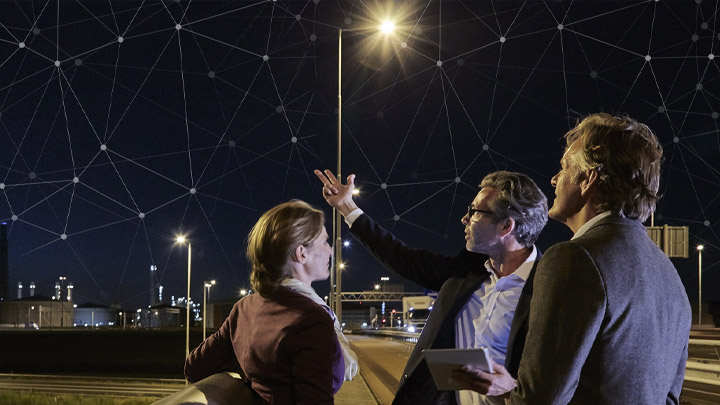With smart commercial lighting in the early stage of adoption, the connected lighting industry is working hard to define use cases, bring down cost and complexity and establish a future-proof foundation in the Sensor Ready (SR) standard. In trying to create new value in a mature industry, we’re following in the footsteps of Philips Hue, the LED light bulb that helped to spark consumer interest in the smart home. So what can we learn from Hue?
A Hue moment
Hue changed how people thought of the humble light bulb by allowing them to be controlled over a wireless network. It centered lighting in the emerging concept of the smart home, amplifying consumer awareness and stoking desire for more personalized home lighting.
The innovation didn’t stop there. When Hue users asked for a master switch to turn off all lights when leaving home, the Hue product team responded with a self-powered wireless switch. It can be installed without inconvenient rewiring and it needs no batteries. Touching it sends a short message to all Hue lights via the wireless network, instructing them to power down. This innovation unlocked lifelong energy savings for customers and a new revenue stream for Signify.
Connecting a light switch to digital intelligence was a master stroke, opening the very mature light switch business to new use cases and breathing new life into the highly commoditized residential lighting market.
Is our Hue moment here?
Just as Hue did, smart commercial lighting offers many opportunities to create value beyond illumination using Sensor Ready architecture. Using self-powered technology, short messages sent wirelessly via the lighting grid have huge potential to help make buildings more efficient by opening up profoundly new ways of doing things.
Such messages can be integrated locally, for instance, by the room controller that sets the temperature. Or they can be harvested to the cloud by a hub or gateway and presented on a dashboard to guide the decisions of a building custodian.
For commercial smart lighting, integrating these short messages is the Hue moment where the information the lighting system carries goes beyond illumination to help in the wider management of the building.
So what does the future look like?
For one thing, buildings will be more comfortable. They’ll ‘know’ how many people are inside, down to every room, and adjust lighting, heating and cooling to suit. They’ll also know when people switch locations, activating the right lighting for the task they’re working on. They’ll also be able to respond to feedback from occupants and align settings to improve comfort.
Buildings will also have better restrooms and service areas, because they’ll know when trash cans are near capacity, or when toilet paper or hand towels are low, and can send someone to empty or replenish them. They’ll also be safer, because they’ll know when someone enters after hours or breaches a restricted area and can alert security.
And that’s just the start. With the smart lighting market expected to grow at more than 21% a year between 2018 and 2023, expect to see many more transformative use cases made possible by Sensor Ready architecture. Hue may have laid the foundation for our industry, but when it comes to innovation, there’s plenty more ground yet to cover.

Global Product Manager
Signify

Sensor-Ready (SR) driving the (r)evolution of DALI into the IoT
Learn how DALI evolved into the new SR interface to provide a wireless-enabled infrastructure for the IoT.

Getting streetwise about outdoor lighting
Street lights come in a range of form factors from but despite all their differences, they have one thing in common: they can all be controlled wirelessly.

Human-centric lighting: are you ready to ride the wave?
The SR standard now includes a standardized protocol for tunable white light, allowing it to be controlled wirelessly.